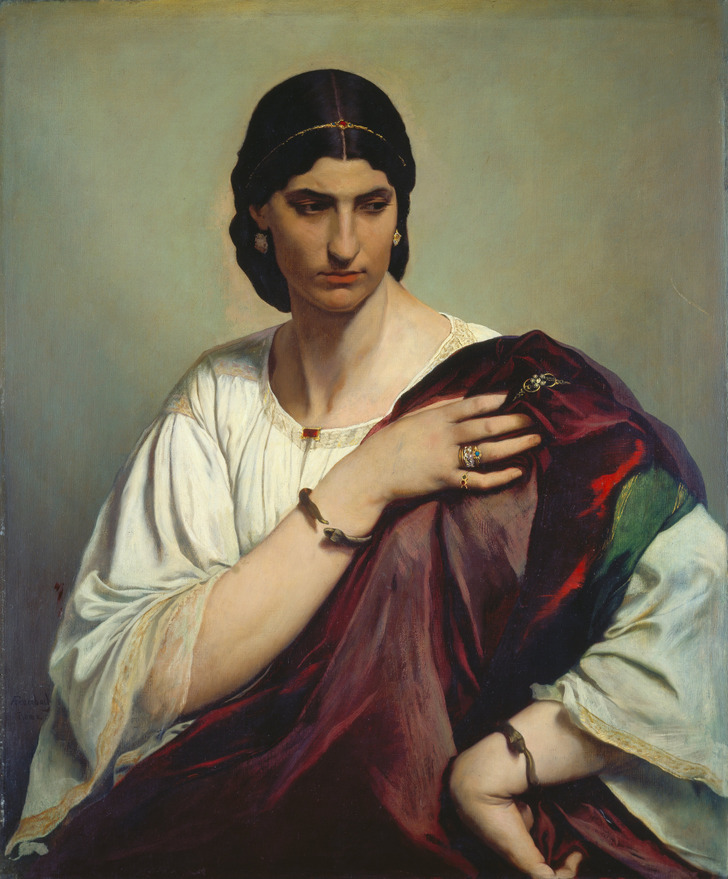20 Facts About the Lives of Women in the Ancient World
When we think about the lives of women in the ancient world, we have 2 conflicting images: a powerful ruler of a huge empire, and a powerless family member who has to do what men tell her. But the truth is somewhere in between, and in the past, women could live somewhat like we do, or in a very different way.
Ancient Egypt
- In Egypt, there was a strange pregnancy test. If a woman thought she was pregnant, she would put a garlic clove not far from the bottom of her belly and would go to sleep. If she woke up with a taste of garlic in her mouth, it meant she was pregnant. Modern science can’t confirm the effectiveness of the garlic test.
- Garlic was also useful to hide infidelity. The ancient Greek philosopher Charmidas wrote that Egyptian husbands chewed garlic cloves on their way home from their mistresses, so their wives would not suspect that anybody would have been kissing them with such bad breath.
- If an Egyptian woman wanted to abort an unwanted pregnancy, she would use a contraceptive that seems really strange today. They used crocodile feces and thought this method was really effective. This method was later adopted by Greek women, who reportedly were pleased with it.
Ancient Greece
- In different Greek city states, women had different rights. While they were controlled by men in Athens, women in Sparta had almost equal rights with men. Although Spartan women were formally excluded from military and political life, they enjoyed considerable status as mothers of Spartan warriors. And when the men were away, they would control the estates. In the 4th century BC, Spartan women owned approximately between 60% and 70% of all Spartan land and property.
- In their normal lives, Spartan women would wear short and revealing dresses and go wherever they wanted. In Athens, women would wear heavy clothes covering their bodies and would rarely leave their homes.
- Another big difference between the 2 big city states was the age for marriage. Girls in Athens would usually get married at 14, and they would marry much older men. Spartan girls would get married at 18-20, and they’d marry men of their age.
- The wedding rituals in Sparta were very different. The night before the wedding, brides’ hair would be cut short, and they would be dressed in men’s cloaks and sandals. This way, they looked like young boys and seemed less dangerous to their husbands. Then, the bride would be sent into a dark room, where her new husband was waiting for her. Later, the husband would keep visiting his wife at night. It was thought to increase the feelings between the spouses and result in stronger children.
- Even though most Greek women were kept far from public life, they could still take part in some events, such as the Olympics. They could participate in chariot races.
- The methods for dyeing hair in Ancient Greece and Rome could cause blindness. The people used lead and sulfur, which are toxic, but people didn’t know it at the time. Their hair looked great, but the consequences for their health could be disastrous.
Ancient Rome
- The Roman law would punish childless couples. It was expected that men aged from 25 to 60 and women from 20 to 50 would have children. Otherwise, they would have to pay fines. Some couples wanted to adopt children to follow the law, but the Senate said it was illegal. And the citizens that had several kids would have tax benefits and a better position in society.
- Aristocratic women would often avoid breastfeeding and hire wet nurses. And those that couldn’t breastfeed and couldn’t afford a wet nurse would attend the so-called Milk Columns (Columna Lactaria). There, parents could get milk for their infants as charity from wet nurses.
- During the early Roman Empire, daughters had the same position as sons. If a father died without a will, a daughter had the right to an equal share of the property. A law introduced in the 2nd century BC tried to limit this right, but it was still functional.
- When getting married, girls would still have their family surnames. Their children would typically get their father’s surnames. But during the empire period, they could add their mother’s surname.
- Women in the Roman Empire would oversee clothing production in a large household. In the early Roman period, the spinning of wool was a central domestic occupation, and indicated a family’s self-sufficiency. Even in an urban setting, wool was often a symbol of a wife’s duties. Equipment for spinning might appear on the funeral monument of a woman to show that she was a good and honorable matron.
- If a man became a widower, he didn’t have to wait for too long before getting married again. It was different for women. They had to go through 10 months of mourning before remarrying.
Ancient China
- The lives of women in Ancient China were far from simple. They didn’t have any civil rights and had to submit to the men in their families. Such a system was called sancong or “three followings.” It meant that women submitted to their dads, then their husbands, and, if they became widows, their sons.
- The marriages in Ancient China were made by the parents of the fiancé and the bride. It wasn’t about love, but about financial and social benefits. Professional matchmakers played a big role; they would identify good matches based on the astrological predictions for each person.
- Just like in Rome, Chinese brides would keep their family surnames after the marriage.
- When a young wife would move into her husband’s house, it was a big ritual: she would be carried on a red wedding chair, and her legs weren’t supposed to touch the land between the houses to scare away the bad spirits.
- If the fiancé died before the wedding, the marriage would still happen. If all the terms were agreed, but the fiancé died a short time before the ceremony, the wedding would take place anyway, and the bride would join the new family as a widow.
How do you imagine the lives of women in the ancient world?
Share This Article



